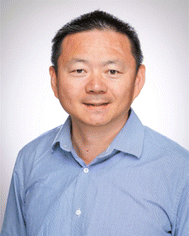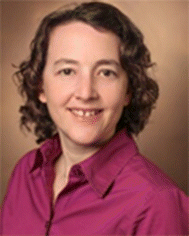Celebrating the 150th anniversary of Vanderbilt University
De-en
Jiang
 *abc,
Janet E.
Macdonald
*abc,
Janet E.
Macdonald
 *bc and
Sharon M.
Weiss
*bc and
Sharon M.
Weiss
 *cde
*cde
aDepartment of Chemical and Biomolecular Engineering, Vanderbilt University, Nashville, TN 37235, USA. E-mail: de-en.jiang@vanderbilt.edu
bDepartment of Chemistry, Vanderbilt University, Nashville, TN 37235, USA. E-mail: janet.macdonald@vanderbilt.edu
cVanderbilt Institute of Nanoscale Science and Engineering, Vanderbilt University, Nashville, TN 37235, USA
dDepartment of Electrical and Computer Engineering, Vanderbilt University, Nashville, TN 37235, USA. E-mail: sharon.weiss@vanderbilt.edu
eDepartment of Physics and Astronomy, Vanderbilt University, Nashville, TN 37235, USA
Abstract
An introduction to the Nanoscale Horizons, Nanoscale and Nanoscale Advances themed collection celebrating the 150th anniversary of Vanderbilt University, featuring work from researchers currently affiliated with Vanderbilt University, esteemed alumni, and researchers with strong connections and extensive collaborations with the university.
Vanderbilt University was founded in 1873 by a generous gift from Cornelius Vanderbilt who rode the first industrial revolution and built a railroad-and-shipping empire in America. Founded in the wake of the US civil war, Vanderbilt's goal was for the university to strengthen ties between all corners of the deeply divided country. As our university celebrates its sesquicentennial, it is our privilege 150 years later to reflect upon Vanderbilt's history and its goal of bringing people together. We wish to celebrate this milestone by presenting some of the remarkable tapestry of intellectual exploration and ground-breaking research in nanoscience and engineering which underpins the technological advances of today, from nanomaterials to microelectronics to nanomedicine.
An important vehicle of nano research at Vanderbilt University is the Vanderbilt Institute of Nanoscale Science and Engineering (VINSE). Founded in 2001, VINSE is a multi-disciplinary institute that supports research, education, and K-12 outreach across science, engineering, and medicine. This vibrant institute and its 55 faculty members from across the campus are the engine of breakthrough nanoscale research at Vanderbilt. Collaboration is often the key to successes and some of our latest work is featured in this collection. Here we highlight two examples: Macdonald, Caldwell and coworkers have revealed the important role played by oleate, a widely used capping agent, in controlling the phases of metal sulfide nanoparticles (https://doi.org/10.1039/D3NH00227F) by harnessing the synthetic skills of the Macdonald lab and spectroscopic abilities of the Caldwell lab; Pantelides and coworkers introduce the new concept of “phonon vortices” in two-dimensional materials by employing density functional theory proof-of-concept calculations (https://doi.org/10.1039/D3NH00433C), based on a collaboration between Vanderbilt and the University of the Chinese Academy of Sciences in Beijing, China.
A crown jewel of Vanderbilt University is its medical school and biomedical research. Both the university and medical center are tightly integrated within a central and small campus in midtown Nashville, Tennessee. This proximity greatly facilitates the cross-fertilization of nanoscience and engineering research with medicine. For example, the Wilson group and their collaborators at the Vanderbilt University Medical Center and other institutions have invented a novel approach to engineer polymer-based endosomolytic nanocarriers for delivery of molecular therapeutic cargo (https://doi.org/10.1039/D3NR02874G).
Nano research is a global enterprise. Vanderbilt alumni are part of these global endeavours and often take the spirit of collaboration with them. This collection also features some of their current work. Lawrie's group at Oak Ridge National Laboratory and their collaborator Jacob Ng at the Technical University of Denmark found substantial change in the photon bunching in cathodoluminescence induced by indirect electron excitation; this observation is foundational to characterization of optical properties in beam-sensitive materials at the nanoscale (https://doi.org/10.1039/D3NR00376K). Carter and coworkers at U.S. Naval Research Laboratory showed that freestanding carbon nanofoam papers provide tunable porosity as cathodes for lithium–sulfur batteries (https://doi.org/10.1039/D3NR02699J). The Yang group at Tsinghua University in Beijing and their collaborators at City University of Hong Kong demonstrated efficient second- and higher-order harmonic generation from LiNbO3 metasurfaces fabricated with ribs of 240 nm in height (https://doi.org/10.1039/D3NR02430J), indicating its great potential applications in non-linear optics.
As Vanderbilt looks forward to the next 150 years and continues to attract brilliant minds, we can be certain that it will continue to shape the landscape of research and education for generations to come. This collection serves as a snapshot of the nanoscale science and engineering research from Vanderbilt faculty, alumni, and collaborators in 2023–2024. We thank all the contributors, Nanoscale Horizons, Nanoscale and Nanoscale Advances editors, and the RSC staff for making this collection a wonderful present in celebrating the 150th anniversary of Vanderbilt University.
| This journal is © The Royal Society of Chemistry 2024 |



